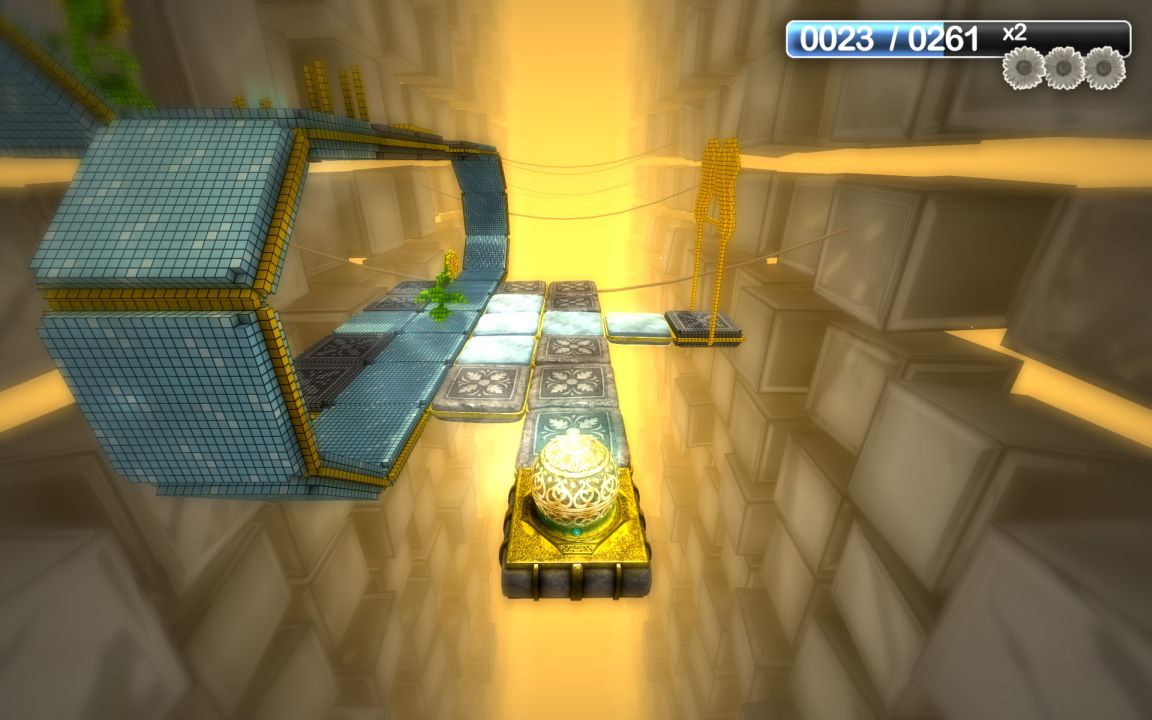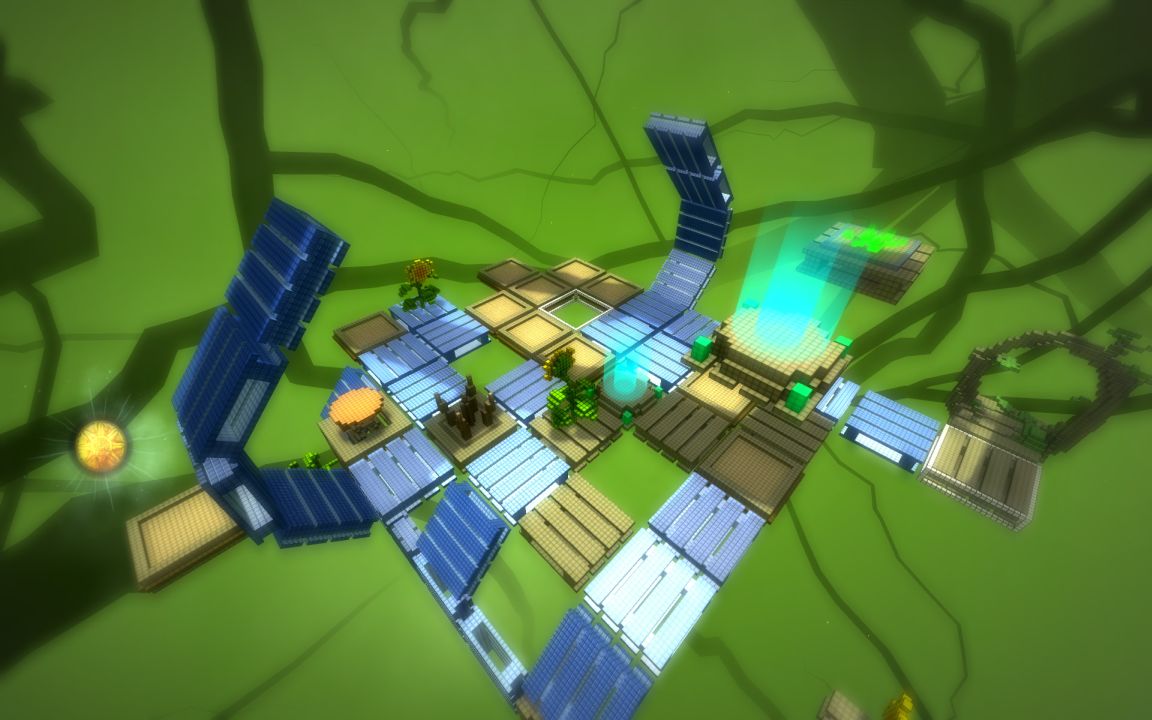Puzzle Dimension Review
Posted by
sirdesmond
on
In 2009, Jesper Rudberg, former founder of Game Design Sweden AB and developer of the original PlayStation title Roll Away, co-founded Doctor Entertainment. In the years since, Jesper and his co-founder Anders Pistol have been hard at work for their spiritual successor to Roll Away titled Puzzle Dimension. The game, much like its predecessor, is a puzzle game that puts the player in control of a ball rolling across differing tiles and tasks them with collecting a number of objects while dodging various obstacles. Unlike its predecessor, gravity shifts along with the movement of the ball itself. Out now on PSN, Puzzle Dimension’s PlayStation roots are quite apparent at first and some new additions come out of the woodwork as you begin to tackle tougher and tougher puzzles, but is it enough to truly keep you engaged in the gameplay?
Graphically, Puzzle Dimension is fairly impressive, and Doctor Entertainment’s proprietary engine certainly well represents everything required by the game and then some. Puzzle games aren’t often known for their graphical prowess, but this is one that, especially for a downloadable title, stands above the crowd. While the expansive backgrounds are fairly bland (as is the game’s overall UI), the level environments themselves are well-rendered, quite ornate, and very realistic. Your ball is ridged with deep engravings, and it shines with a beautiful golden metal finish.

From an art style perspective, the game has an interesting transformation mechanic. Each tile and object are first seem in their simply, pixelated form and then, as you get within a certain distance from them, they transform into high-definition, current-gen versions of themselves. The game claims that this transformation carries over into the music as well, but I wasn’t really able to discern any gigantic difference, at least while playing naturally. Although it is a bit of an odd decision (that is to say that it doesn’t entirely fit with the rest of the game’s mechanic or narrative), this art style does entice you to traverse the entirety of each level in order to see everything transformed.
The game plays like many other ball-rolling puzzle games with one primary addition. While you will be rolling your ball from tile to tile, jumping over gaps, avoiding fire, sliding across ice, and breaking thin stone tiles, Puzzle Dimension’s one main addition is the inclusion of gravity that follows the ball’s perspective rather than being tied to a traditional up-down mechanic (like most puzzle games or the Earth). This essentially means that you can go up a ramp or around a loop without ever falling because gravity is always pulling you down towards the tile that you are on.
While this ever-changing gravitational pull mechanic is definitely the game’s main difference from other, similar puzzle games, it is also one of the game’s primary points of frustration: the camera. With the gravity always shifting, the camera always following the ball, and the ball being forced through loops and multi-tiered environments, the game’s third-person camera angle sits far too close to the ball itself making it very difficult to view your surroundings adequately and, at times, even see what is a few tiles ahead of you. While I would imagine that this is a problem much more easily remedied on the PC and Mac version of the game, it is almost impossible to operate smoothly with the Dualshock controller.

In terms of content, Puzzle Dimensions has 100 levels. These levels are spread across a number of different, roughly-themed sets. Normally, one new tile type or puzzle mechanic is introduced and featured predominantly in all the levels within the set. As you progress into later and later sets, all of the previous tile and obstacle types are also included adding to the overall complexity of the courses you are required to traverse. Although the high number of overall levels is certainly appreciated, I found the level of advancement through said levels to be a fairly slow and tedious process that tested my patience on more than one occasion in which I simply did not want to have to do another 4 nearly-identical, although somewhat more complicated, levels before being introduced to a new mechanic. I would rather that the mechanic and tile introductions be sped up and then followed by more challenging levels featuring all of the tiles and obstacles included. Unfortunately, the mechanics aren’t anything new and the levels grow tiresome well before they should. Only the most puzzle loving players may be able to keep their attention tied to the screen throughout all the level sets.
Ultimately, Puzzle Dimension is a well put together game that should keep most puzzle fans entertained enough but may wear thin before the end to other players due to an overall lack of innovation and unique gameplay mechanics. Although the game contains 100 different levels, you’ll often find only about 10-20 of those feel all that different than the one immediately played before or after it. If you are a hardcore puzzle game fan or a former player of Roll Away for PS1, than you may want to check out Puzzle Dimension. If you don’t find yourself gravitating towards puzzle games all that often, there is not much here to entice you to take the plunge other than the slick, but occasionally bland visuals.
